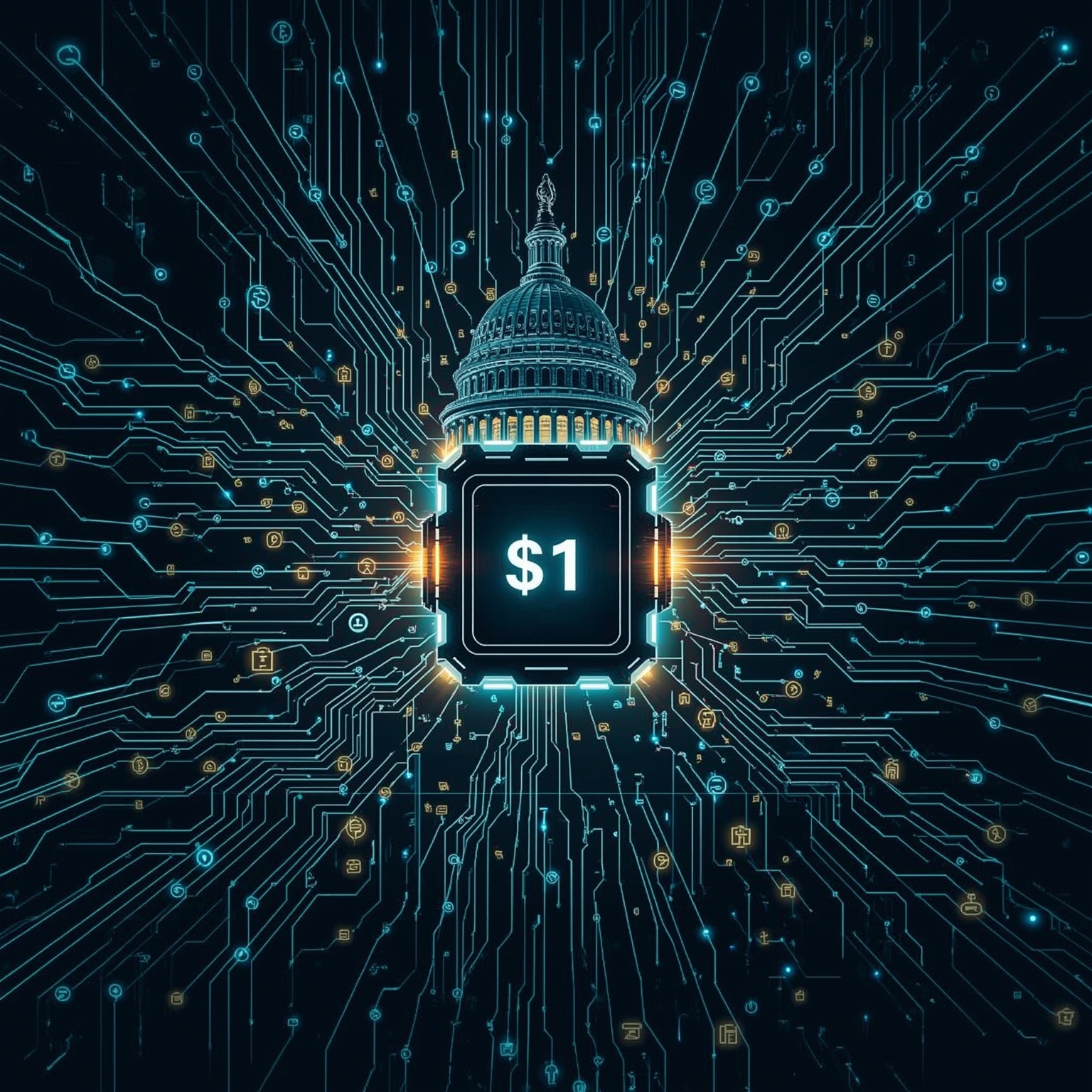The seemingly symbolic ‘$1-per-year’ offers that OpenAI and Anthropic have extended to the Trump administration may initially appear irresistibly enticing, conveying the impression of a dramatic technological bargain. Yet, according to Sid Ghatak—who previously served as an advisor on artificial intelligence within the Biden administration—these nominal deals could ultimately conceal enormous financial and strategic burdens that far outweigh their headline price tags. Ghatak, in a conversation with *Business Insider* last month, cautioned that policymakers must resist the temptation to focus only on surface-level affordability and instead scrutinize the numerous hidden dimensions of expense required to deploy, manage, and sustain artificial intelligence systems effectively across the federal government.
Ghatak posed a pointed question that lies at the heart of these doubts: *What does it truly mean for something to cost just a single dollar?* He emphasized that while such offers might suggest wide-ranging access to powerful AI models, the initial payment is almost certainly not the entire story. Agencies must consider whether computational resources for training and operation will later be charged on an incremental basis, creating an ongoing and unpredictable stream of expenditures. For example, tailoring an AI system to serve the distinctive needs of federal departments is rarely straightforward or inexpensive, as this typically requires retraining large-scale models using specialized data. Once that considerable investment has been made, the next stage introduces additional complexities: will inference—the actual process of querying the model as federal employees and contractors use it in real-world applications—incur recurring costs every single time it is accessed? In Ghatak’s analysis, these less visible yet highly consequential expenses constitute the genuine price of adoption, overshadowing the initial allure of a nearly cost-free entry point.
When asked for clarification, major companies at the forefront of this competitive AI landscape, including OpenAI, Anthropic, and Google, declined to respond to *Business Insider’s* request for comment. Nonetheless, Ghatak urged caution, stressing that the conversation must extend well beyond simplistic promotional messaging.
It is worth noting that OpenAI’s engagement with government agencies has not been restricted exclusively to symbolic dollar-based offers. In fact, in June, the United States Department of Defense publicly disclosed that it had awarded OpenAI a substantial contract valued at $200 million, the purpose of which was to advance the development of tailor-made AI tools intended for sensitive national security objectives. Such partnerships underscore that even as companies experiment with ultra-low entry pricing for civilian agencies, the broader monetary stakes surrounding AI integration are already enormous and politically significant.
Ghatak speaks from considerable experience. Between 2020 and 2024, he directed the Office of Evaluation Sciences and the data and analytics portfolio at the General Services Administration, where he oversaw large-scale federal digital infrastructure. During this time, he played a pivotal role in shaping President Joe Biden’s October 2023 executive order on artificial intelligence and contributed as a co-author to the federal government’s AI Maturity Model, a structured framework devised to evaluate the readiness of AI products for adoption. Following his departure from government service, Ghatak founded Increase Alpha, an artificial-intelligence–driven platform designed for predicting financial market movements.
Drawing on this background, he warns that the government must exercise prudence by calculating what he calls the ‘fully loaded cost’—a holistic assessment that includes every hidden layer of infrastructure, training, maintenance, and operational use—rather than being distracted by what he sees as artificially attractive entry prices of zero to one dollar. The problem, he underscored, is not limited to formal payments made directly to industry leaders such as OpenAI, Anthropic, or Google. A significant portion of the real financial outlay will arise from the government’s own need to consolidate, standardize, and refine its massive and fragmented data holdings so that these AI systems may function reliably. Without such foundational investment, even the most sophisticated algorithm will produce questionable or misleading results.
Reflecting on this, Ghatak employed an apt metaphor: AI models, he explained, are like immensely powerful engines. However, no matter how well built, an engine cannot operate smoothly unless it is supplied with high-quality fuel. In the context of AI, that ‘fuel’ is data—robust, well-organized, and meticulously curated. Ensuring that the federal government possesses data of such caliber requires a costly and labor-intensive process, an undertaking that cannot be overlooked if one hopes to achieve reliable outputs.
Notably, these promotional offers are already being actively courted. Last month, both OpenAI and Anthropic formally announced that they would provide federal employees with a full year of access to their AI models at the symbolic fee of $1 per agency. Meanwhile, Google positioned itself as a competitor through its ‘Gemini for Government’ initiative, promising that by the year 2026, U.S. agencies will be able to access its suite of AI tools for a nominal $0.47 for twelve months—a figure calculated with equal theatricality to capture attention.
While some emphasize caution, others present compelling arguments for the positive potential of widespread AI adoption in government. Casey Coleman, who served as the General Services Administration’s chief information officer between 2007 and 2014, expressed the view to *Business Insider* that granting civil servants access to advanced AI tools would liberate them from monotonous administrative duties and instead allow them to apply greater creativity and judgment to high-value tasks. According to Coleman, the automation of tedious workflow processes, combined with the ability to connect disparate strands of information across siloed organizations, has the transformative potential to restore time to public servants—time that could be redirected toward innovation, policy craft, or direct service to citizens. As she eloquently pointed out, most individuals join public service not to manage endless bureaucratic formalities, but to contribute meaningfully and give back to their communities.
Taken together, these perspectives reveal a nuanced portrait of the opportunities and dangers embedded in the rapid adoption of AI within government agencies. On the one hand, low-cost offers captivate public attention and promise accelerated access to cutting-edge technology. On the other, experts like Ghatak remind policymakers that the path forward involves a far more complicated array of costs and investments. True prudence demands not only financial due diligence but also a recognition of the demanding infrastructural, ethical, and organizational changes that robust AI integration requires. In essence, the debate is not simply about whether AI can be acquired cheaply but whether it can be adopted intelligently, sustainably, and with a full understanding of the hidden requirements that lie beneath the surface of the $1 promise.
Sourse: https://www.businessinsider.com/ex-government-tech-advisor-openai-deal-high-cost-2025-9



